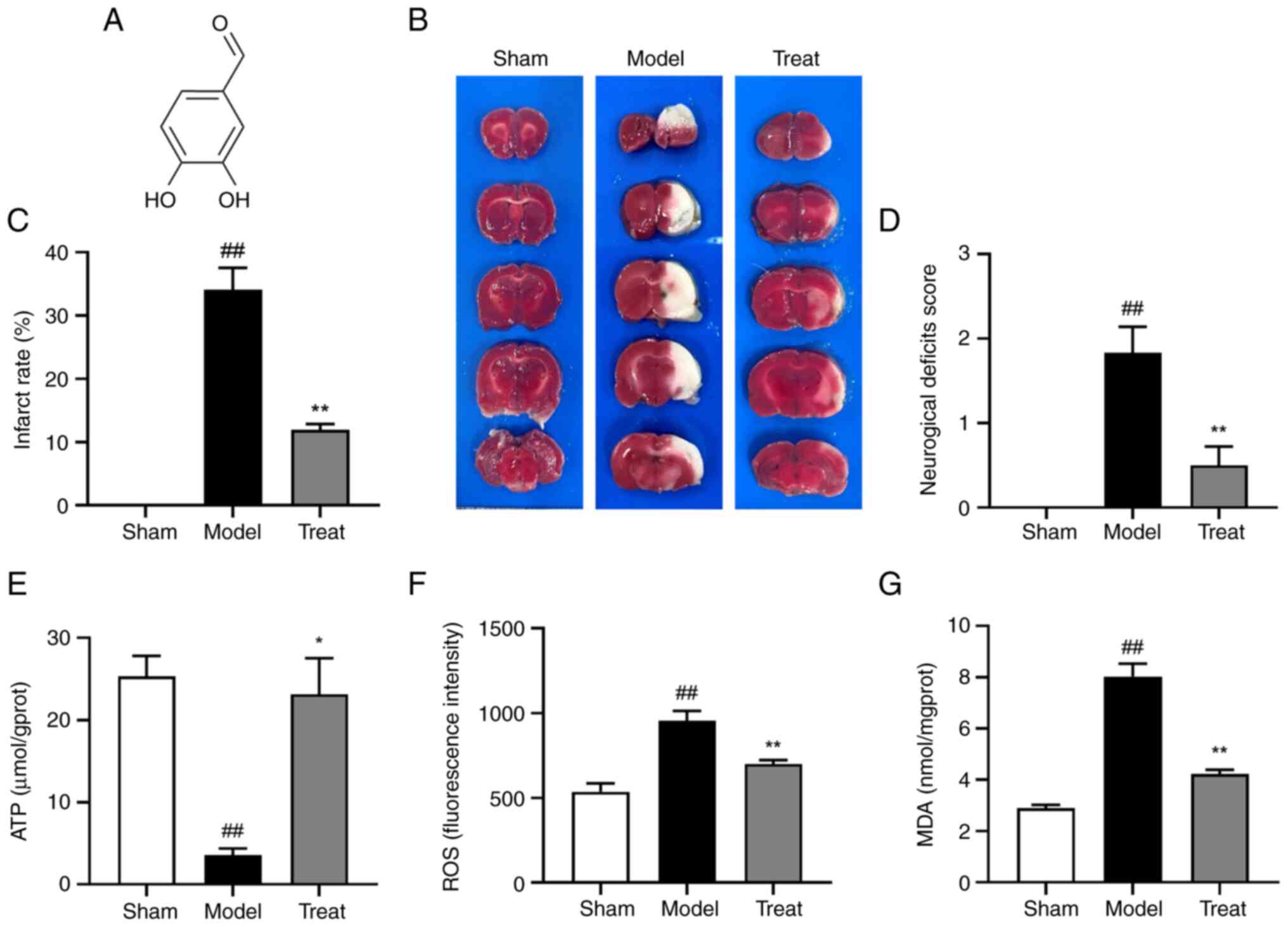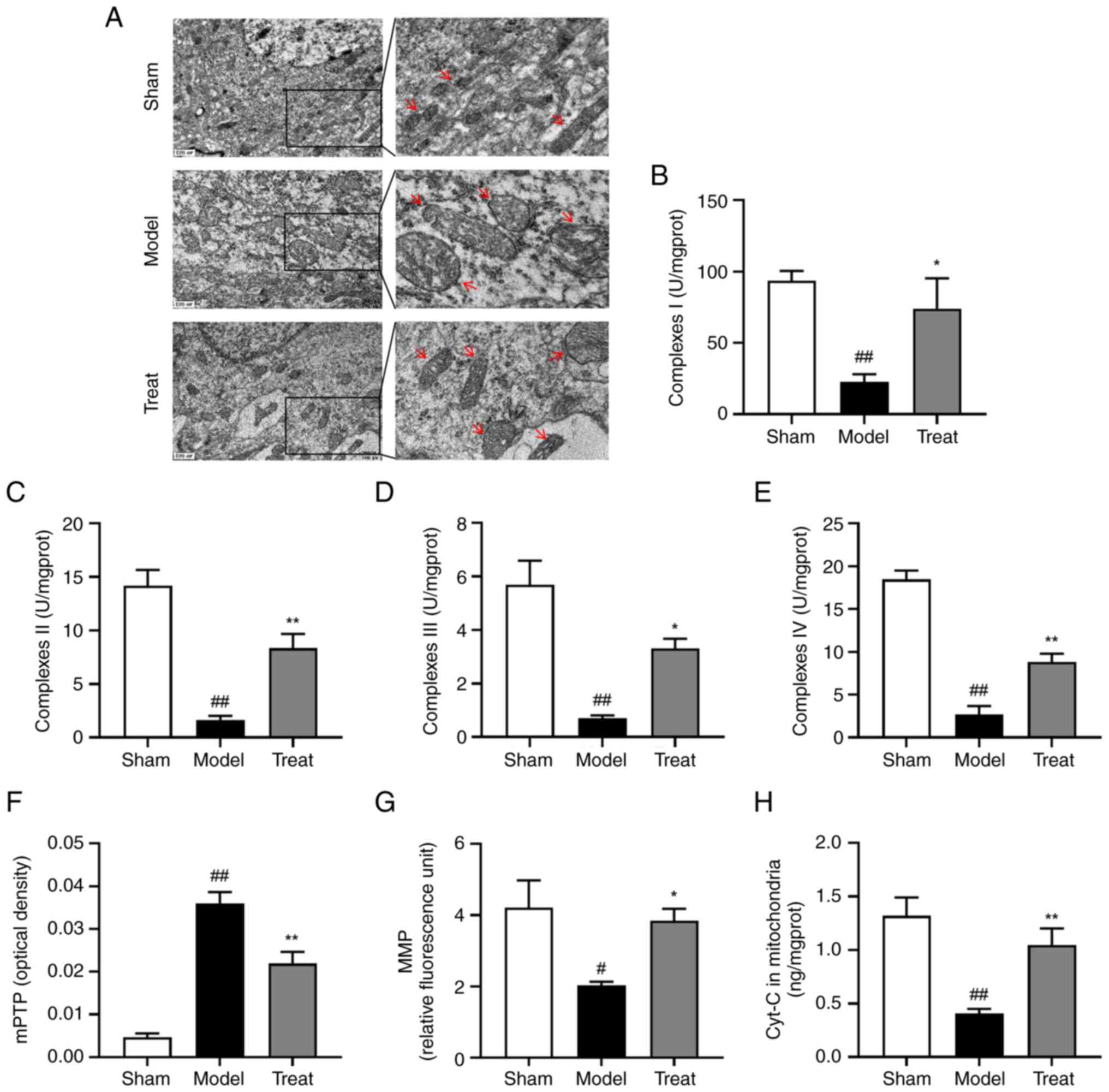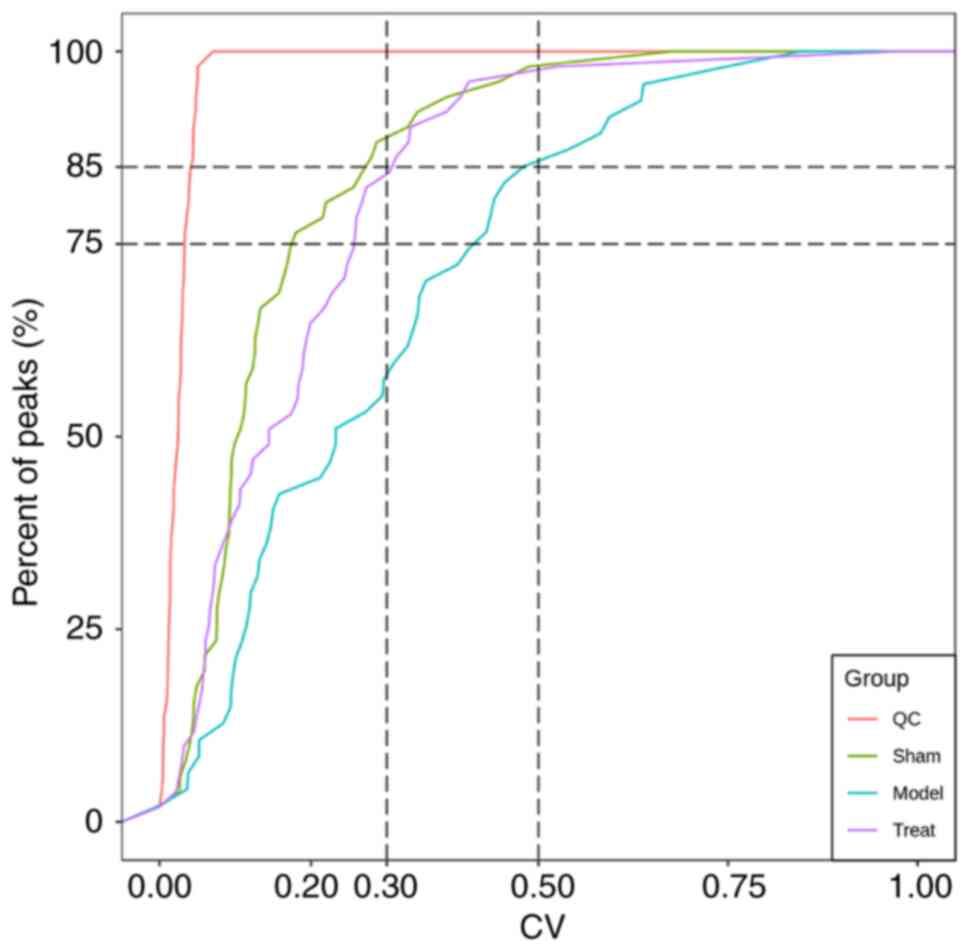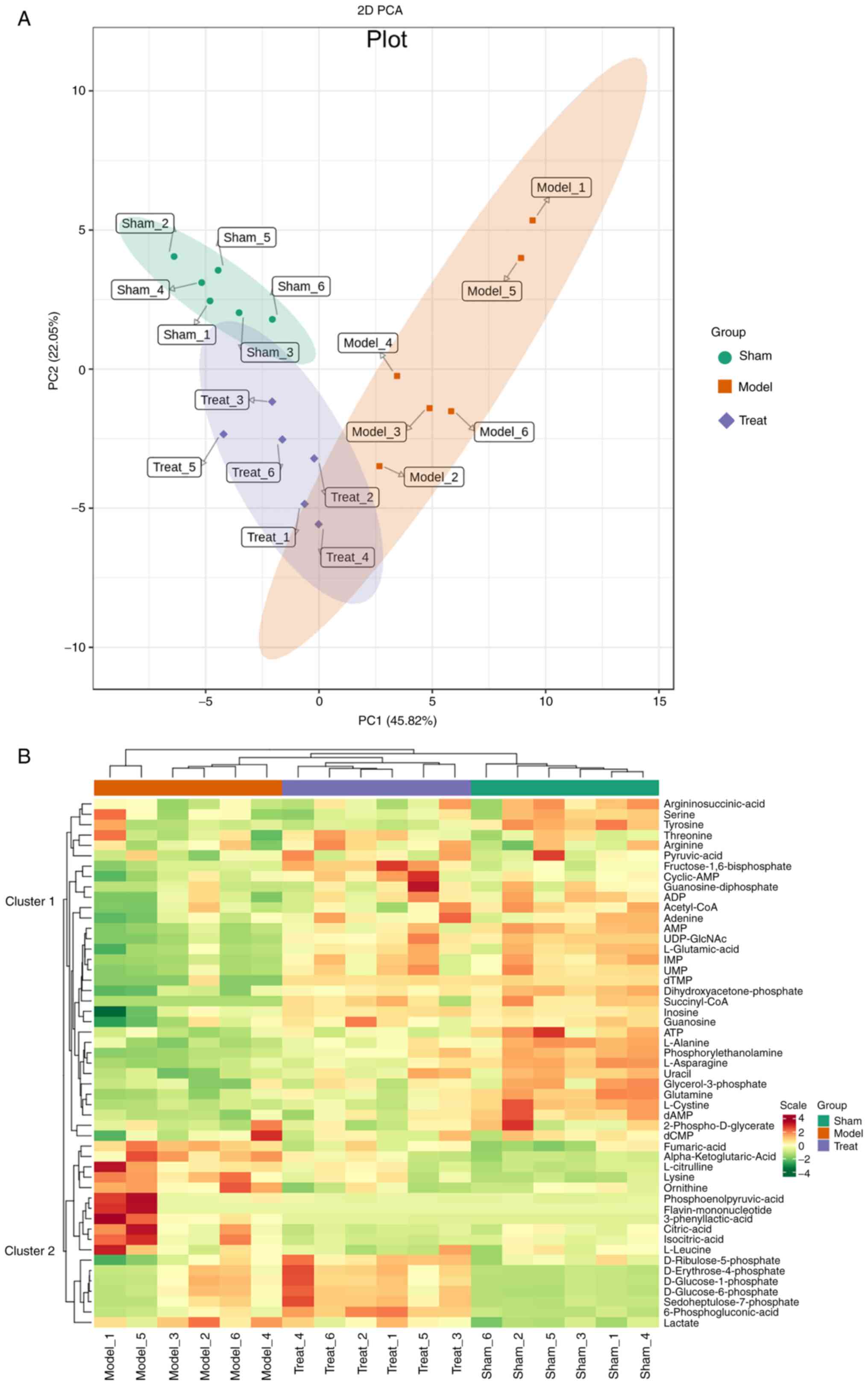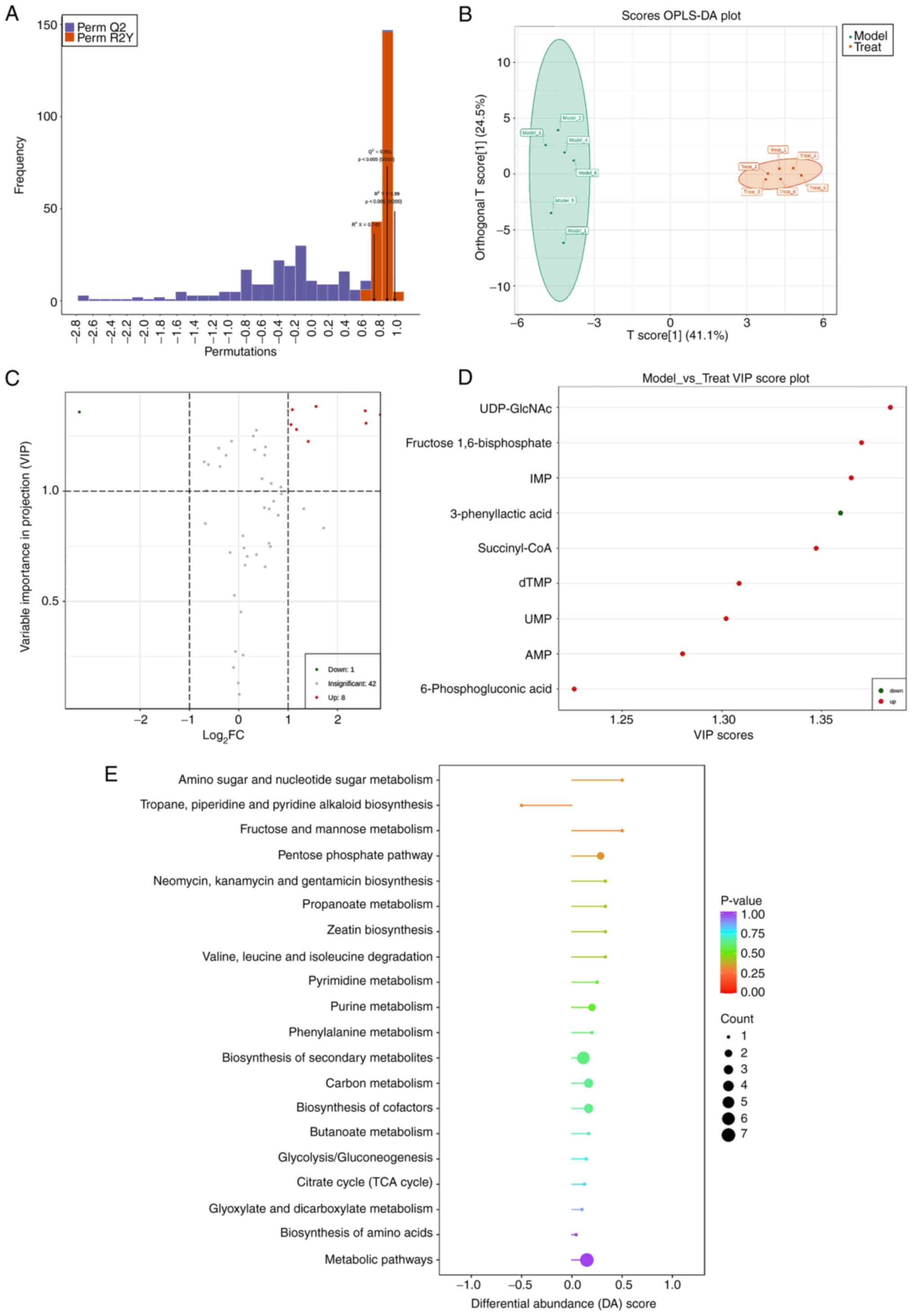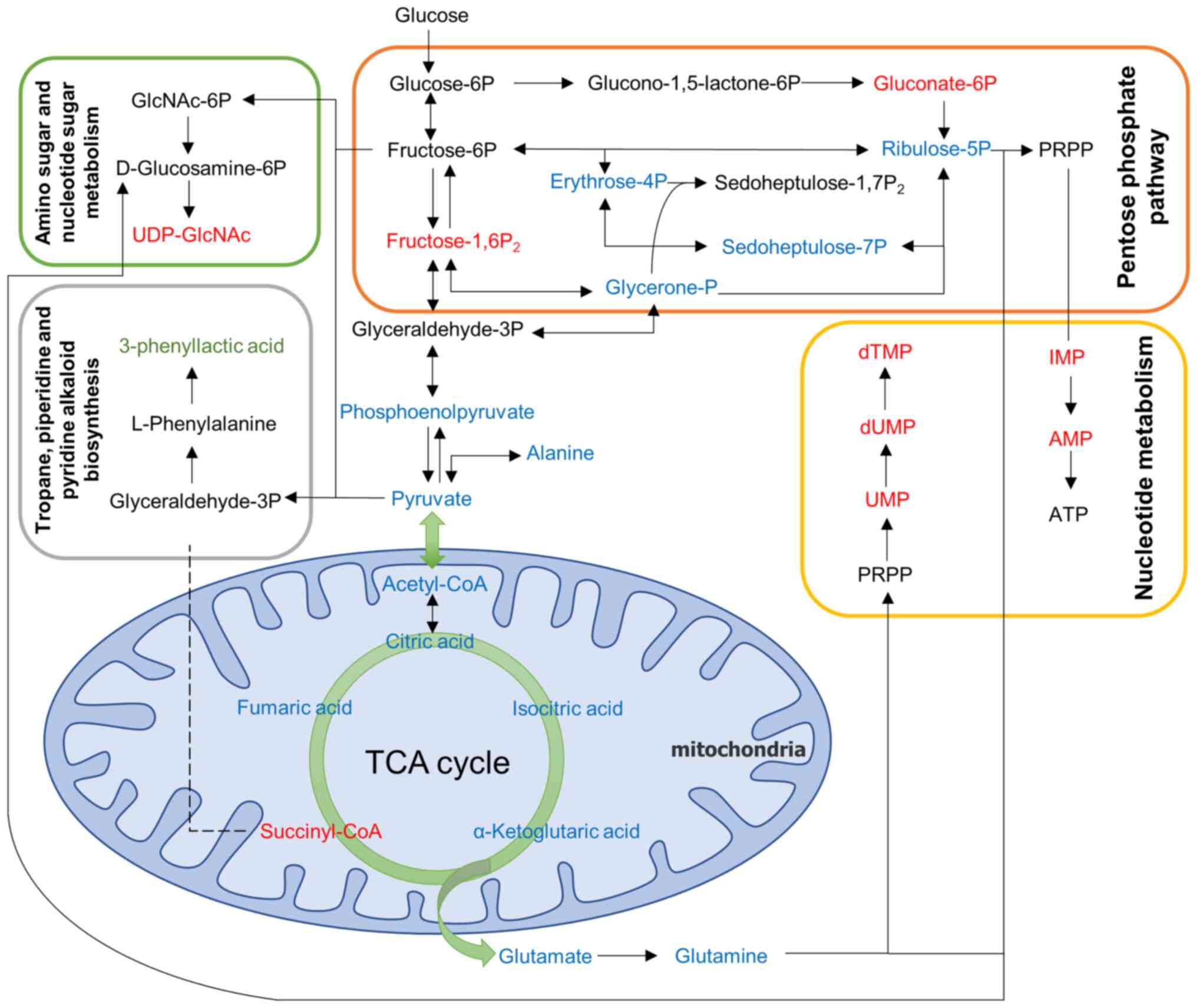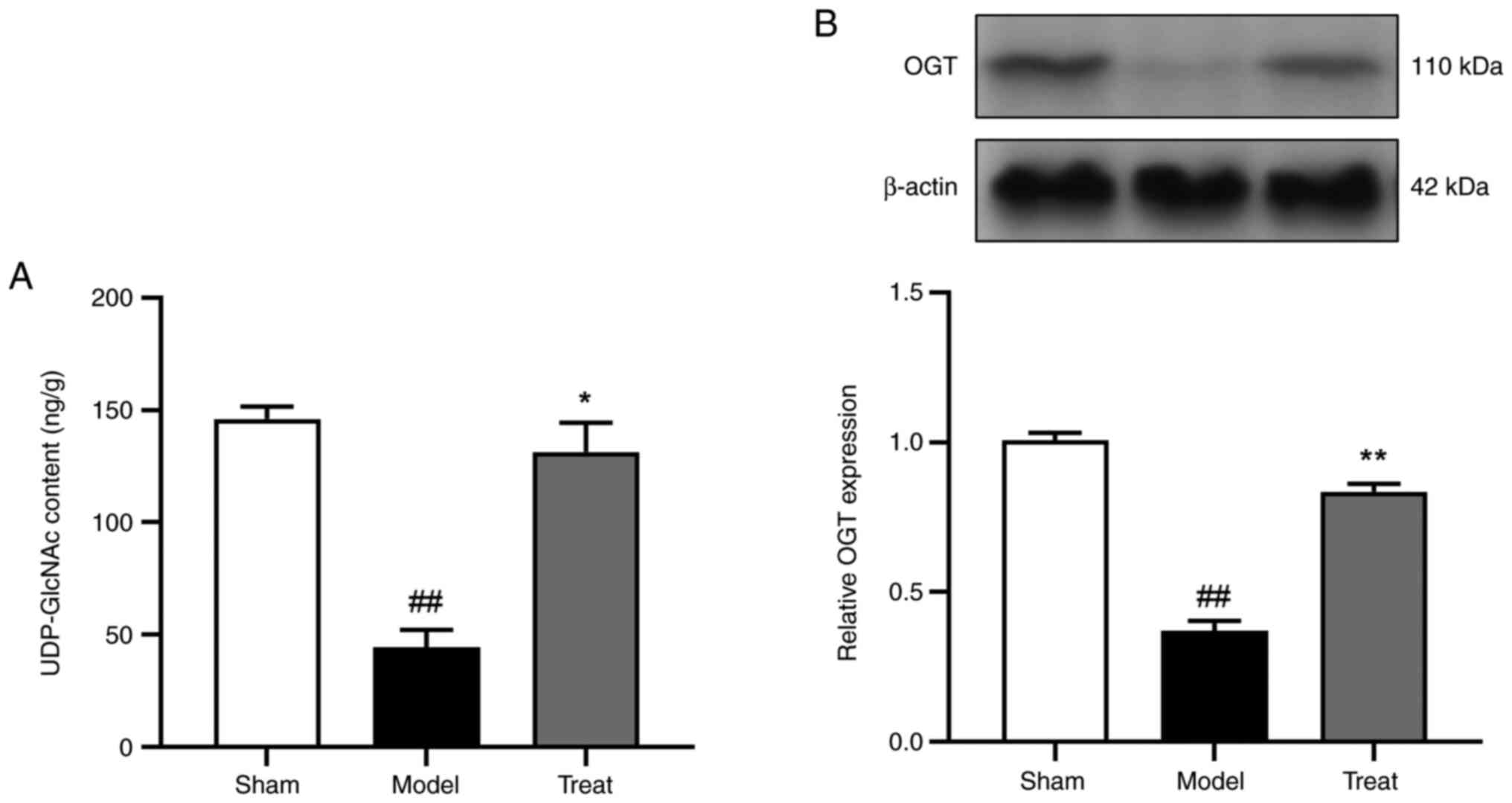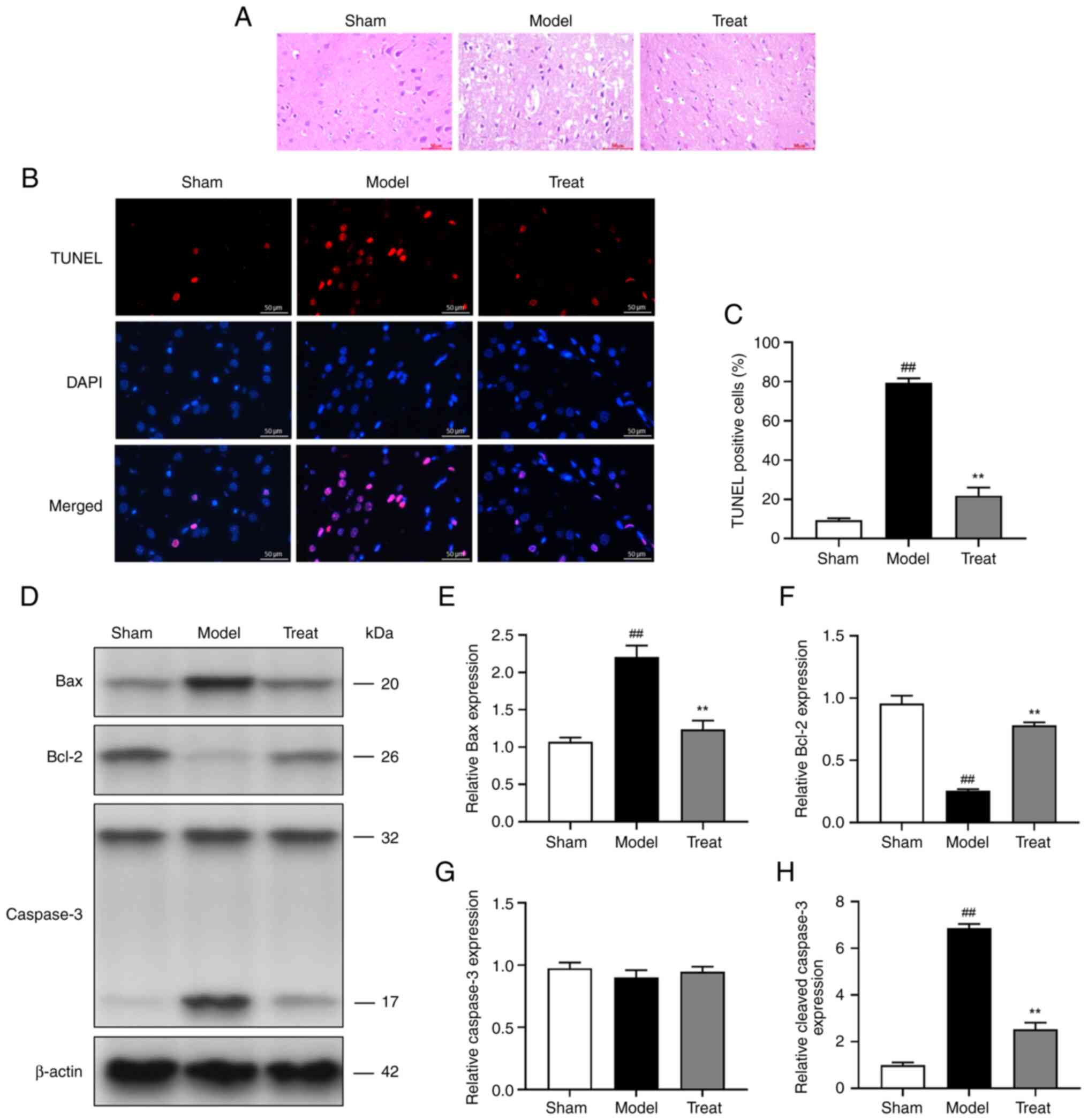|
1
|
Feigin VL, Brainin M, Norrving B, Martins
S, Sacco RL, Hacke W, Fisher M, Pandian J and Lindsay P: World
stroke organization (WSO): Global stroke fact sheet 2022. Int J
Stroke. 17:18–29. 2022. View Article : Google Scholar : PubMed/NCBI
|
|
2
|
GBD 2019 Stroke Collaborators, . Global,
regional, and national burden of stroke and its risk factors,
1990–2019: A systematic analysis for the global burden of disease
study 2019. Lancet Neurol. 20:795–820. 2021. View Article : Google Scholar : PubMed/NCBI
|
|
3
|
Feigin VL, Roth GA, Naghavi M, Parmar P,
Krishnamurthi R, Chugh S, Mensah GA, Norrving B, Shiue I, Ng M, et
al: Global burden of stroke and risk factors in 188 countries,
during 1990–2013: A systematic analysis for the global burden of
disease Study 2013. Lancet Neurol. 15:913–924. 2016. View Article : Google Scholar : PubMed/NCBI
|
|
4
|
Lust WD, Taylor C, Pundik S, Selman WR and
Ratcheson RA: Ischemic cell death: Dynamics of delayed secondary
energy failure during reperfusion following focal ischemia. Metab
Brain Dis. 17:113–121. 2002. View Article : Google Scholar : PubMed/NCBI
|
|
5
|
Lim S, Kim TJ, Kim YJ, Kim C, Ko SB and
Kim BS: Senolytic therapy for cerebral ischemia-reperfusion injury.
Int J Mol Sci. 22:119672021. View Article : Google Scholar : PubMed/NCBI
|
|
6
|
Nhu NT, Li Q, Liu Y, Xu J, Xiao SY and Lee
SD: Effects of mdivi-1 on neural mitochondrial dysfunction and
mitochondria-mediated apoptosis in ischemia-reperfusion injury
after stroke: A systematic review of preclinical studies. Front Mol
Neurosci. 14:7785692021. View Article : Google Scholar : PubMed/NCBI
|
|
7
|
Wu M, Gu X and Ma Z: Mitochondrial quality
control in cerebral ischemia-reperfusion injury. Mol Neurobiol.
58:5253–5271. 2021. View Article : Google Scholar : PubMed/NCBI
|
|
8
|
Hayashida K, Takegawa R, Shoaib M, Aoki T,
Choudhary RC, Kuschner CE, Nishikimi M, Miyara SJ, Rolston DM,
Guevara S, et al: Mitochondrial transplantation therapy for
ischemia reperfusion injury: A systematic review of animal and
human studies. J Transl Med. 19:2142021. View Article : Google Scholar : PubMed/NCBI
|
|
9
|
Ma Z, Xin Z, Di W, Yan X, Li X, Reiter RJ
and Yang Y: Melatonin and mitochondrial function during
ischemia/reperfusion injury. Cell Mol Life Sci. 74:3989–3998. 2017.
View Article : Google Scholar : PubMed/NCBI
|
|
10
|
Vongsfak J, Pratchayasakul W, Apaijai N,
Vaniyapong T, Chattipakorn N and Chattipakorn SC: The alterations
in mitochondrial dynamics following cerebral ischemia/reperfusion
injury. Antioxidants (Basel). 10:13842021. View Article : Google Scholar : PubMed/NCBI
|
|
11
|
Paul S and Candelario-Jalil E: Emerging
neuroprotective strategies for the treatment of ischemic stroke: An
overview of clinical and preclinical studies. Exp Neurol.
335:1135182021. View Article : Google Scholar : PubMed/NCBI
|
|
12
|
Zhu T, Wang L, Feng Y, Sun G and Sun X:
Classical Active ingredients and extracts of chinese herbal
medicines: Pharmacokinetics, pharmacodynamics, and molecular
mechanisms for ischemic stroke. Oxid Med Cell Longev.
2021:88689412021. View Article : Google Scholar : PubMed/NCBI
|
|
13
|
Zhu H, Liu C, Hou J, Long H, Wang B, Guo
D, Lei M and Wu W: Gastrodia elata blume polysaccharides: A
review of their acquisition, analysis, modification, and
pharmacological activities. Molecules. 24:24362019. View Article : Google Scholar : PubMed/NCBI
|
|
14
|
Lin LC, Chen YF, Tsai TR and Tsai TH:
Analysis of brain distribution and biliary excretion of a nutrient
supplement, gastrodin, in rat. Anal Chim Acta. 590:173–179. 2007.
View Article : Google Scholar : PubMed/NCBI
|
|
15
|
Guo C, Wang S, Duan J, Jia N, Zhu Y, Ding
Y, Guan Y, Wei G, Yin Y, Xi M and Wen A: Protocatechualdehyde
protects against cerebral ischemia-reperfusion-induced oxidative
injury via protein kinase cepsilon/Nrf2/HO-1 pathway. Mol
Neurobiol. 54:833–845. 2017. View Article : Google Scholar : PubMed/NCBI
|
|
16
|
Guo Y, Yang JH, He Y, Zhou HF, Wang Y,
Ding ZS, Jin B and Wan HT: Protocatechuic aldehyde prevents
ischemic injury by attenuating brain microvascular endothelial cell
pyroptosis via lncRNA Xist. Phytomedicine. 94:1538492022.
View Article : Google Scholar : PubMed/NCBI
|
|
17
|
Li X, Xiang B, Shen T, Xiao C, Dai R, He F
and Lin Q: Anti-neuroinflammatory effect of
3,4-dihydroxybenzaldehyde in ischemic stroke. Int Immunopharmacol.
82:1063532020. View Article : Google Scholar : PubMed/NCBI
|
|
18
|
He F, Duan X, Dai R, Wang W, Yang C and
Lin Q: Protective effects of ethyl acetate extraction from
Gastrodia elata blume on blood-brain barrier in focal
cerebral ischemia reperfusion. Afr J Tradit Complement Altern Med.
13:199–209. 2016. View Article : Google Scholar : PubMed/NCBI
|
|
19
|
Feng J, Xu YL, Meng QT, Yan HW and He FY:
Protective effect of protocatechuic aldehyde on neurovascular unit
nomeostasis damage in rats after cerebral ischemia-reperfusion
Injury. China Pharmacy. 32:1811–1817. 2021.
|
|
20
|
Duan X, Wang W, Liu X, Yan H, Dai R and
Lin Q: Neuroprotective effect of ethyl acetate extract from
Gastrodia elata against transient focal cerebral ischemia in
rats induced by middle cerebral artery occlusion. J Tradit Chin
Med. 35:671–678. 2015. View Article : Google Scholar : PubMed/NCBI
|
|
21
|
Zeng M, Shao C, Zhou H, He Y, Li W, Zeng
J, Zhao X, Yang J and Wan H: Protocatechudehyde improves
mitochondrial energy metabolism through the HIF1alpha/PDK1
signaling pathway to mitigate ischemic stroke-elicited internal
capsule injury. J Ethnopharmacol. 277:1142322021. View Article : Google Scholar : PubMed/NCBI
|
|
22
|
Shah SH, Kraus WE and Newgard CB:
Metabolomic profiling for the identification of novel biomarkers
and mechanisms related to common cardiovascular diseases: Form and
function. Circulation. 126:1110–1120. 2012. View Article : Google Scholar : PubMed/NCBI
|
|
23
|
Medina S, Dominguez-Perles R, Gil JI,
Ferreres F and Gil-Izquierdo A: Metabolomics and the diagnosis of
human diseases-a guide to the markers and pathophysiological
pathways affected. Curr Med Chem. 21:823–848. 2014. View Article : Google Scholar : PubMed/NCBI
|
|
24
|
Lu AP, Bian ZX and Chen KJ: Bridging the
traditional Chinese medicine pattern classification and biomedical
disease diagnosis with systems biology. Chin J Integr Med.
18:883–890. 2012. View Article : Google Scholar : PubMed/NCBI
|
|
25
|
Beccaria M and Cabooter D: Current
developments in LC-MS for pharmaceutical analysis. Analyst.
145:1129–1157. 2020. View Article : Google Scholar : PubMed/NCBI
|
|
26
|
Cao G, Jiang N, Hu Y, Zhang Y, Wang G, Yin
M, Ma X, Zhou K, Qi J, Yu B and Kou J: Ruscogenin attenuates
cerebral ischemia-induced blood-brain barrier dysfunction by
suppressing TXNIP/NLRP3 inflammasome activation and the MAPK
pathway. Int J Mol Sci. 17:14182016. View Article : Google Scholar : PubMed/NCBI
|
|
27
|
Li J, Yu W, Li XT, Qi SH and Li B: The
effects of propofol on mitochondrial dysfunction following focal
cerebral ischemia-reperfusion in rats. Neuropharmacology.
77:358–368. 2014. View Article : Google Scholar : PubMed/NCBI
|
|
28
|
Chong J and Xia J: MetaboAnalystR: An R
package for flexible and reproducible analysis of metabolomics
data. Bioinformatics. 34:4313–4314. 2018. View Article : Google Scholar : PubMed/NCBI
|
|
29
|
Liu Y, Xue X, Zhang H, Che X, Luo J, Wang
P, Xu J, Xing Z, Yuan L, Liu Y, et al: Neuronal-targeted TFEB
rescues dysfunction of the autophagy-lysosomal pathway and
alleviates ischemic injury in permanent cerebral ischemia.
Autophagy. 15:493–509. 2019. View Article : Google Scholar : PubMed/NCBI
|
|
30
|
Rich PR and Marechal A: The mitochondrial
respiratory chain. Essays Biochem. 47:1–23. 2010. View Article : Google Scholar : PubMed/NCBI
|
|
31
|
Nolfi-Donegan D, Braganza A and Shiva S:
Mitochondrial electron transport chain: Oxidative phosphorylation,
oxidant production, and methods of measurement. Redox Biol.
37:1016742020. View Article : Google Scholar : PubMed/NCBI
|
|
32
|
Geng X, Shen J, Li F, Yip J, Guan L, Rajah
G, Peng C, DeGracia D and Ding Y: Phosphoenolpyruvate carboxykinase
(PCK) in the brain gluconeogenic pathway contributes to oxidative
and lactic injury after stroke. Mol Neurobiol. 58:2309–2321. 2021.
View Article : Google Scholar : PubMed/NCBI
|
|
33
|
Faverzani JL, Steinmetz A, Deon M,
Marchetti DP, Guerreiro G, Sitta A, de Moura Coelho D, Lopes FF,
Nascimento LVM, Steffens L, et al: L-carnitine protects DNA
oxidative damage induced by phenylalanine and its keto acid
derivatives in neural cells: A possible pathomechanism and adjuvant
therapy for brain injury in phenylketonuria. Metab Brain Dis.
36:1957–1968. 2021. View Article : Google Scholar : PubMed/NCBI
|
|
34
|
Cheng H, Lv M, Mi R and Xue G: Amifostine
ameliorates cerebral ischaemia-reperfusion injury via p38-mediated
oxidative stress and mitochondrial dysfunction. Folia Neuropathol.
58:334–346. 2020. View Article : Google Scholar : PubMed/NCBI
|
|
35
|
Li J, Ma X, Yu W, Lou Z, Mu D, Wang Y,
Shen B and Qi S: Reperfusion promotes mitochondrial dysfunction
following focal cerebral ischemia in rats. PLoS One. 7:e464982012.
View Article : Google Scholar : PubMed/NCBI
|
|
36
|
Spinelli JB and Haigis MC: The
multifaceted contributions of mitochondria to cellular metabolism.
Nat Cell Biol. 20:745–754. 2018. View Article : Google Scholar : PubMed/NCBI
|
|
37
|
Wang SD, Fu YY, Han XY, Yong ZJ, Li Q, Hu
Z and Li ZG: Hyperbaric oxygen preconditioning protects against
cerebral ischemia/reperfusion injury by inhibiting mitochondrial
apoptosis and energy metabolism disturbance. Neurochem Res.
46:866–877. 2021. View Article : Google Scholar : PubMed/NCBI
|
|
38
|
Chen Y, Guo S, Tang Y, Mou C, Hu X, Shao
F, Yan W and Wu Q: Mitochondrial fusion and fission in neuronal
death induced by cerebral ischemia-reperfusion and its clinical
application: A mini-review. Med Sci Monit.
26:e9286512020.PubMed/NCBI
|
|
39
|
Shin TH, Lee DY, Basith S, Manavalan B,
Paik MJ, Rybinnik I, Mouradian MM, Ahn JH and Lee G: Metabolome
changes in cerebral ischemia. Cells. 9:16302020. View Article : Google Scholar : PubMed/NCBI
|
|
40
|
Imahori T, Hosoda K, Nakai T, Yamamoto Y,
Irino Y, Shinohara M, Sato N, Sasayama T, Tanaka K, Nagashima H, et
al: Combined metabolic and transcriptional profiling identifies
pentose phosphate pathway activation by HSP27 phosphorylation
during cerebral ischemia. Neuroscience. 349:1–16. 2017. View Article : Google Scholar : PubMed/NCBI
|
|
41
|
Espanol MT, Litt L, Hasegawa K, Chang LH,
Macdonald JM, Gregory G, James TL and Chan PH:
Fructose-1,6-bisphosphate preserves adenosine triphosphate but not
intracellular pH during hypoxia in respiring neonatal rat brain
slices. Anesthesiology. 88:461–472. 1998. View Article : Google Scholar : PubMed/NCBI
|
|
42
|
Park JY, Kim EJ, Kwon KJ, Jung YS, Moon
CH, Lee SH and Baik EJ: Neuroprotection by
fructose-1,6-bisphosphate involves ROS alterations via p38
MAPK/ERK. Brain Res. 1026:295–301. 2004. View Article : Google Scholar : PubMed/NCBI
|
|
43
|
Salau VF, Erukainure OL, Koorbanally NA
and Islam MS: Catechol protects against iron-mediated oxidative
brain injury by restoring antioxidative metabolic pathways; and
modulation of purinergic and cholinergic enzymes activities. J
Pharm Pharmacol. 72:1787–1797. 2020. View Article : Google Scholar : PubMed/NCBI
|
|
44
|
Dobson CM, Gradinger A, Longo N, Wu X,
Leclerc D, Lerner-Ellis J, Lemieux M, Belair C, Watkins D,
Rosenblatt DS and Gravel RA: Homozygous nonsense mutation in the
MCEE gene and siRNA suppression of methylmalonyl-CoA epimerase
expression: A novel cause of mild methylmalonic aciduria. Mol Genet
Metab. 88:327–333. 2006. View Article : Google Scholar : PubMed/NCBI
|
|
45
|
Andreasson M, Zetterstrom RH, von Dobeln
U, Wedell A and Svenningsson P: MCEE mutations in an adult patient
with Parkinson's disease, dementia, stroke and elevated levels of
methylmalonic acid. Int J Mol Sci. 20:26312019. View Article : Google Scholar : PubMed/NCBI
|
|
46
|
Tanaka T, Ogita A, Usuki Y and Fujita K:
Selective inhibition of embryonic development in starfish by
long-chain alkyl derivatives of UMP, TMP and AMP. Nat Prod Res.
23:1572–1578. 2009. View Article : Google Scholar : PubMed/NCBI
|
|
47
|
Frenguelli BG and Dale N: Purines: From
diagnostic biomarkers to therapeutic agents in brain injury.
Neurosci Bull. 36:1315–1326. 2020. View Article : Google Scholar : PubMed/NCBI
|
|
48
|
Chon J, Stover PJ and Field MS: Targeting
nuclear thymidylate biosynthesis. Mol Aspects Med. 53:48–56. 2017.
View Article : Google Scholar : PubMed/NCBI
|
|
49
|
Moritz CE, Teixeira BC, Rockenbach L,
Reischak-Oliveira A, Casali EA and Battastini AM: Altered
extracellular ATP, ADP, and AMP hydrolysis in blood serum of
sedentary individuals after an acute, aerobic, moderate exercise
session. Mol Cell Biochem. 426:55–63. 2017. View Article : Google Scholar : PubMed/NCBI
|
|
50
|
Xu D, Ai Q, Chen X, Wang Z, Wei H, Zhou L,
Mei Z and Ge J: Metabonomics study on naotaifang extract
alleviating neuronal apoptosis after cerebral ischemia-reperfusion
injury. Evid Based Complement Alternat Med.
2022:21124332022.PubMed/NCBI
|
|
51
|
Murakami K, Kurotaki D, Kawase W, Soma S,
Fukuchi Y, Kunimoto H, Yoshimi R, Koide S, Oshima M, Hishiki T, et
al: OGT regulates hematopoietic stem cell maintenance via
PINK1-dependent mitophagy. Cell Rep. 34:1085792021. View Article : Google Scholar : PubMed/NCBI
|
|
52
|
Wang ZV, Deng Y, Gao N, Pedrozo Z, Li DL,
Morales CR, Criollo A, Luo X, Tan W, Jiang N, et al: Spliced X-box
binding protein 1 couples the unfolded protein response to
hexosamine biosynthetic pathway. Cell. 156:1179–1192. 2014.
View Article : Google Scholar : PubMed/NCBI
|
|
53
|
Wang Z, Li X, Spasojevic I, Lu L, Shen Y,
Qu X, Hoffmann U, Warner DS, Paschen W, Sheng H and Yang W:
Increasing O-GlcNAcylation is neuroprotective in young and aged
brains after ischemic stroke. Exp Neurol. 339:1136462021.
View Article : Google Scholar : PubMed/NCBI
|
|
54
|
Jiang M, Yu S, Yu Z, Sheng H, Li Y, Liu S,
Warner DS, Paschen W and Yang W: XBP1 (X-Box-Binding
Protein-1)-dependent O-GlcNAcylation is neuroprotective in ischemic
stroke in young mice and its impairment in aged mice is rescued by
Thiamet-G. Stroke. 48:1646–1654. 2017. View Article : Google Scholar : PubMed/NCBI
|
|
55
|
Cheng J, Wu Y, Chen L, Li Y, Liu F, Shao
J, Huang M, Fan M and Wu H: Loss of O-GlcNAc transferase in neural
stem cells impairs corticogenesis. Biochem Biophys Res Commun.
532:541–547. 2020. View Article : Google Scholar : PubMed/NCBI
|
|
56
|
Ziamajidi N, Jamshidi S and Ehsani-Zonouz
A: In-silico and in-vitro investigation on the phenylalanine
metabolites' interactions with hexokinase of Rat's brain
mitochondria. J Bioenerg Biomembr. 49:139–147. 2017. View Article : Google Scholar : PubMed/NCBI
|
|
57
|
Hart GW, Slawson C, Ramirez-Correa G and
Lagerlof O: Cross talk between O-GlcNAcylation and phosphorylation:
Roles in signaling, transcription, and chronic disease. Annu Rev
Biochem. 80:825–858. 2011. View Article : Google Scholar : PubMed/NCBI
|
|
58
|
Zhao J, Dong L, Huo T, Cheng J, Li X,
Huangfu X, Sun S, Wang H and Li L: O-GlcNAc transferase (OGT)
protects cerebral neurons from death during ischemia/reperfusion
(I/R) injury by modulating Drp1 in mice. Neuromolecular Med.
24:299–310. 2021. View Article : Google Scholar : PubMed/NCBI
|
|
59
|
He Z, Ning N, Zhou Q, Khoshnam SE and
Farzaneh M: Mitochondria as a therapeutic target for ischemic
stroke. Free Radic Biol Med. 146:45–58. 2020. View Article : Google Scholar : PubMed/NCBI
|
|
60
|
Pan Y, Wang N, Xia P, Wang E, Guo Q and Ye
Z: Inhibition of Rac1 ameliorates neuronal oxidative stress damage
via reducing Bcl-2/Rac1 complex formation in mitochondria through
PI3K/Akt/mTOR pathway. Exp Neurol. 300:149–166. 2018. View Article : Google Scholar : PubMed/NCBI
|
|
61
|
Bajwa E, Pointer CB and Klegeris A: The
role of mitochondrial damage-associated molecular patterns in
chronic neuroinflammation. Mediators Inflamm. 2019:40507962019.
View Article : Google Scholar : PubMed/NCBI
|
|
62
|
Lai Y, Lin P, Chen M, Zhang Y, Chen J,
Zheng M, Liu J, Du H, Chen R, Pan X, et al: Restoration of L-OPA1
alleviates acute ischemic stroke injury in rats via inhibiting
neuronal apoptosis and preserving mitochondrial function. Redox
Biol. 34:1015032020. View Article : Google Scholar : PubMed/NCBI
|















